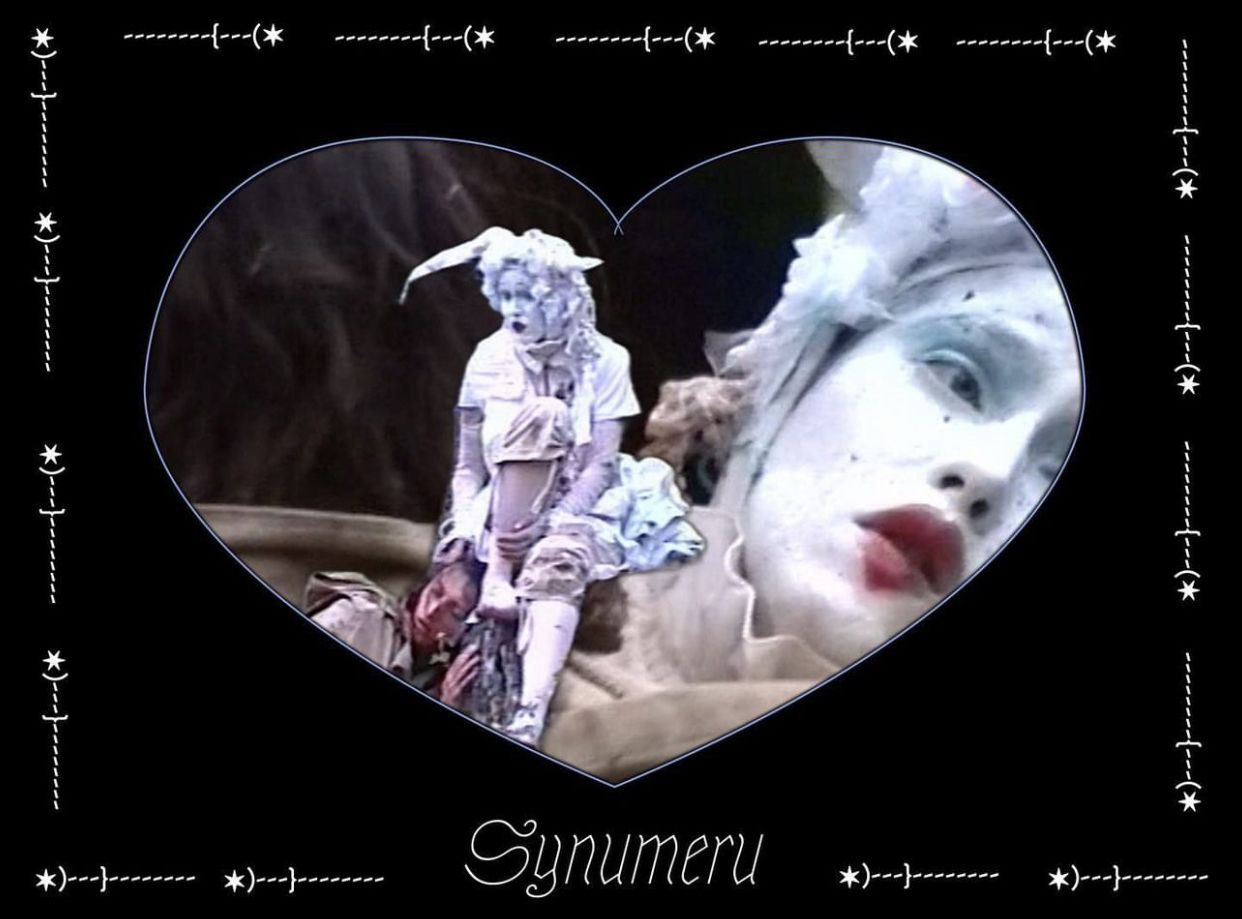Synumeru
Special screening from 31/05/24 till 07/06/24
Max Svitlo and Salt Salome’s film speaks about mourning and pain, love, trust, death and vitality, all in a spectrum of both contradictory and complementary feelings in a state of war. The artists’ duo refers to their experience as the multiverse, in which the awakened reality, dreams and hallucinations interact and interchange. This multiverse also reflects the altered perception of space and time in the midst of ruin and destruction. Thus, space widens until an area of the whole country becomes a single battlefield. Simultaneously, temporality transgresses its linear course: recollections intermingle and the anticipation of the events evoke terror before they even happen. The events of the Second World War, which the grandparents of the artists experienced, return to them in a new form over time, creating a loop, in which the future and the past change places until they become indistinguishable.
The title, Synumeru, comes from a song that Svitlo heard while passing the Military Medical Commission in Zvenyhorodka [1] in 2022. Whilst he was there he met a man who lost his son at war. The man was singing a heavy song of sorrow for his child: ‘A son died, a son died, does a father have to die?’ [2] Throughout the film, Svitlo switches between different roles: from a civilian working on land in a village, he later appears both as defender of this land and as its enemy. He performs, but his performance is lived in reality. He plays with the absence of scenery as the cruel surrealism not only surrounds but captures him everywhere in life — the mooing of a cow is followed by the wail of an air raid siren, a projectile hits a vegetable garden, a military plane howls shrilly overhead.
In a magical realism of the artists, fantasy is absent on the level of sense — it directly meets the pain to learn from it or at least to start the journey towards learning. A multiverse, in this sense, reflects a path of a complex subject preoccupied by the unknown. Unlike the scenarios of science fiction, the multiverse of artists is alive and documenting: it records evidence and evokes reminiscences. Such a world demonstrates the multiplicity of each of our separate experiences and has room for polysemy within each individual memory. This complicated canvas of the personal recollections undermines a singular memory of the empire which it artificially grows and by which it justifies its own crimes.
The process of living through the rapidly changing experiences with their own body, as well as the active search for visual methods, is an emancipatory psychoanalytic practice for Max Svitlo and Salt Salome. In the final scenes of the film a bright and fragile creature appears, carried in the hands of the film’s hero. Left alone with his vulnerability and fear the subject accepts it and continues to move forward. By carrying a fear forward, one nurtures it until that fear either burns them or burns itself giving them a healing that we all desperately need.

The work is exhibited within the Erasing and Recalling project supported as part of the (re)connection UA 2023/24 programme, which is implemented by the Museum of Contemporary Art (MOCA) NGO and the Ukrainian Emergency Art Fund (UEAF) in partnership with UNESCO and funded through the UNESCO Heritage Emergency Fund.
Text by Milena Khomchenko. Editing by Ada Wordsworth.
Published 31 May 2024
Max Svitlo
A photographer, cinematographer, sculptor, musician and performer. He was born in Zvenyhorodka, which is in the heart of Ukraine. His project ‘Light’ combines video and photography, through which Maksym explores the poetic perception of the world. In 2020, he started working with sculpture and theatre at the Shipyard 2 ((SRZ-2)) in Odesa. Since 2022 he has been involved in cinema and performance art with his wife.
Salt Salome
Is originally from Qazaqstan, and since 2022 has been based in Ukraine. An intermedia artist specialising in cinema, theatre, performance, rituals and experimental costume. Salt Salome creates another dimension (mimodramе) where past, present and future, real and imaginary, hallucinatory and dreamlike merge into a single dimension. She experiments with different aspects of time: its non-linearity, its cyclicality, its multi-dimensionality.
- A small city in the Cherkasy region, which is in the centre of Ukraine.
2. [In Ukrainian — Син умер, син умер, чи ще й батько має померти?].
